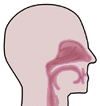  |
||
 |
June 2009Theophylline Treatment Improves Smell LossTheophylline treatment has been demonstrated to improve smell loss (hyposmia) significantly in over 50% of patients with this clinical problem. This improvement has been demonstrated by decreased thresholds (increased acuity) for all odors, increased magnitude estimation (increased sensitivity) for all odors and appropriate changes in hedonics (pleasant odors are perceived as more pleasant, unpleasant odors are perceived at more unpleasant). These changes have been demonstrated in patients in whom there are specific biochemical defects which determine their smell loss. These patients all had lower than normal levels of cAMP and cGMP in their saliva and nasal mucus. Patients with several disease processes which initiated their smell loss exhibited these biochemical defects and improved their smell function on theophylline. These processes included post viral-like illness, allergic rhinitis, congenital smell loss, head injury and several other clinical issues. These adenylyl cyclases are growth factors which are critical to initiate maturation and function of stem cells in the olfactory epithelium, to maintain normal smell function and to return smell function toward or to normal in patients who have loss of smell function. Smell improvement has been demonstrated after oral administration of theophylline. Drug dose is positively correlated with smell improvement — as the drug dose increases so does smell improvement. However, responses to theophylline are highly individual; some patients respond with smell recovery on small doses of the drug (e.g., 200mg) whereas others require higher doses (600mg or 800mg). Smell improvement also relates to period of drug administration. Some patients respond with recovery of smell function quickly as soon as 4-6 weeks after taking low doses of theophylline; others require 4-8 months on variable doses of theophylline. As theophylline is given for longer time periods an increase in smell function can occur. Once smell function is restored, as long as theophylline is continued, smell function is maintained. If theophylline treatment is terminated, return of smell function can be reversed and patients lose the benefit they obtained from theophylline treatment. This study was performed on 312 patients over a period of seven years. It will be published in June 2009 in the following publication: The American Journal of the Medical Sciences, An open label controlled trial of theophylline for treatment of patients with hyposmia, 2009;337:1-11. This is the first published systematic clinical trial of the use of theophylline in patients with hyposmia. |
|